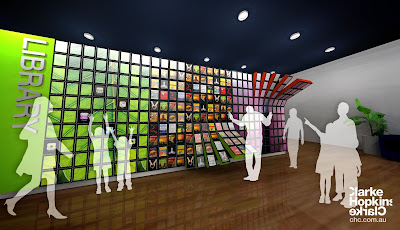
At the hardware store recently I noticed spray cans of White Knight "
Reflect-All light reflective paint". This is available in a silver metallic colour, but more interestingly also as a clear varnish. This might be suitable for spraying on a walls to make a high efficiency screen for projector, particularly new low power LED projectors. When not in use the screen would be all but invisible and could be painted on a dark colour wall.
The paint has "microbeads" which act as retro-reflectors, showing up brightly in the dark when a light is shone on them. This is similar to the material used in road markings. The difference is that it is available at the retail level and in a clear form, rather than the bright white used for road markings. Also the beads are much finer than those in road markings. The paint when applied looks like a frosted translucent finish with a rough mat texture. If applied in a thin coat to a very dark shiny surface it is noticeable as a milky film. In a thicker coat it looks like ground glass. But on a lighter matt surface, such as typical flat creme wall paint, it is all but invisible.
Having bought a can and tried it out the paint looks promising. It reflects so much more light than conventional paint that it would make a very good projection surface. This would be particularity useful for new LED projectors, which are not as bright as halogen ones. It would allow projectors to be used in much brighter environments and on dark and uneven surfaces.
But there are some limitations. As with any highly reflective screen, any blemishes are highlighted. The paint would need to be applied professionally, preferably by a trained operator with a professional spray gun, not the retail spray cans. The wall would have to be kept clean, as any grease would show up. Also any abrasive cleaner used may mar the surface. The microbeads reflect light back in a narrow cone, so there is not a wide viewing angle for the screen and the projector has to be near the viewer. The paint could not be used in a room with a brightly lit window, or spotlight opposite, as the reflective surface will show up (but then if used for protection there should not be a window or light opposite anyway).
The material could allow projection in rooms which are usually unsuitable. As an example, the projection surface could have lights or windows on each side. The ambient light would not be reflected towards the viewer, but the image from the projector would be.
Applied to a black or very dark wall this material might provide a way to produce a low cost hologram-like effect for video conferences. There are some systems using half silvered mirrors or film to give the appearance of the person in the room, however these are cumbersome and inflexible. Instead the lighting in the room could be carefully arranged so that it does not reflect from the wall into the camera lens. As a result the wall would be a very dark black, allowing anyone or anything in front to stand out clearly from the background for a very clear video image of the person. An image could be projected onto the same background which would show in sharp relief. With this arrangement two people could be in separate remote locations, with their images projected next to each of them, so they both appear to be standing next to each other at both locations.
It might also be interesting to apply the paint to glass or clear plastic sheeting. This would create a sheet of translucent frosted material which would act as a very good projection surface. A meeting room could have a frosted glass wall onto a corridor, which could be used as the projection screen. With the lighting carefully arranged, the image would be clearly visible in the room, but not in the corridor on the other side.
Before using the material on a large scale in a confined space the safety of the microbeads and the paint they are embedded in would need to be considered. The spray gives off a strong paint smell and some of the microbeads may become airborne in the process.
ps: The pain might also create a new form of subtle graffiti: The reflective paint is not visible during the day, but would show up clearly in car headlights at night.
Labels: digital video, teleworking, video wall, web conference
 According to Gizmodo, architects Clarke Hopkins Clarke have suggested stacking hundreds of Apple iPads on a library wall to display iBooks. A wall of iPads in a library is an intriguing idea, but would cost twenty times as much as some alternatives. There are much more affordable and environmentally efficient ways to build a video wall to display e-Books.
According to Gizmodo, architects Clarke Hopkins Clarke have suggested stacking hundreds of Apple iPads on a library wall to display iBooks. A wall of iPads in a library is an intriguing idea, but would cost twenty times as much as some alternatives. There are much more affordable and environmentally efficient ways to build a video wall to display e-Books.

